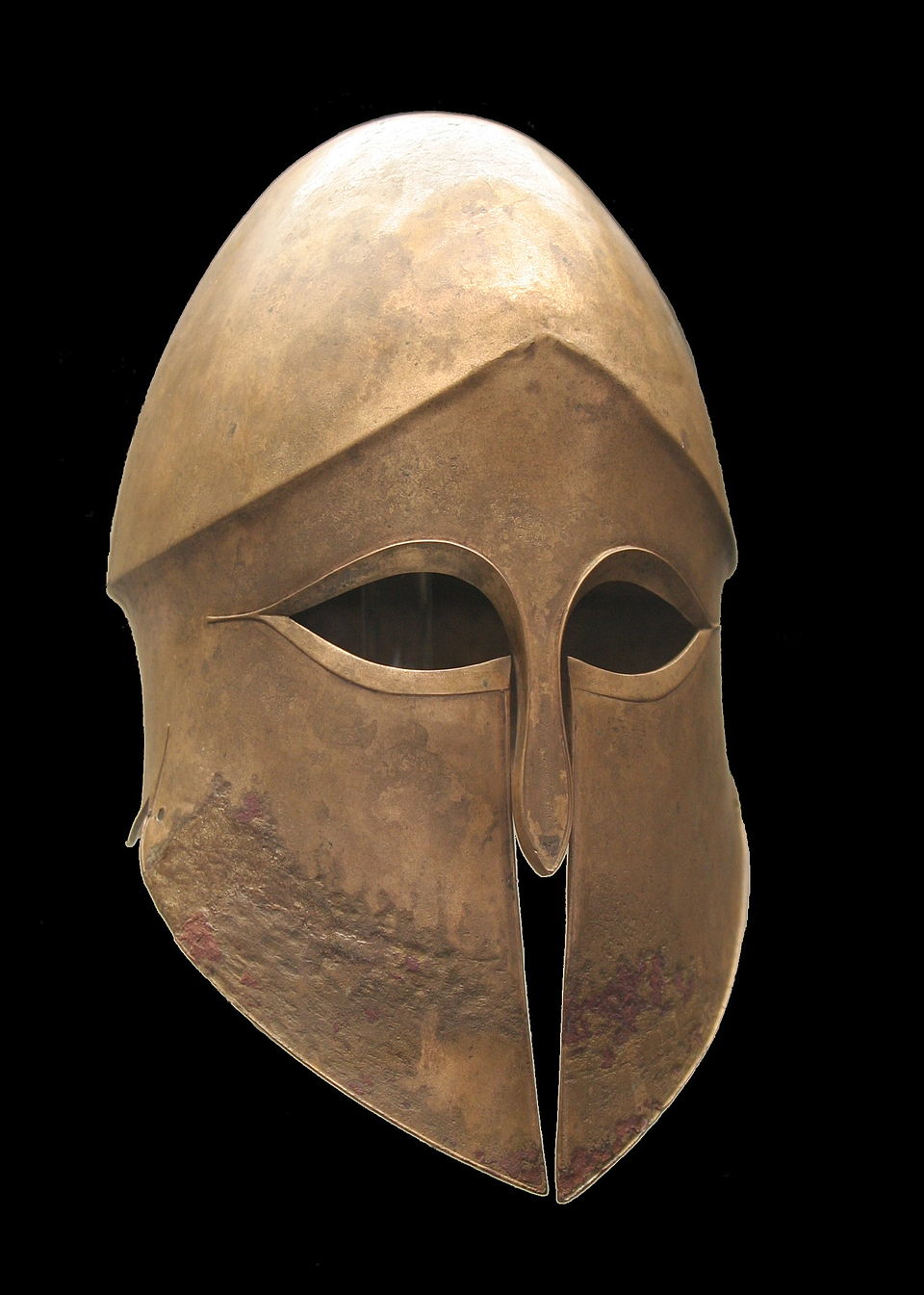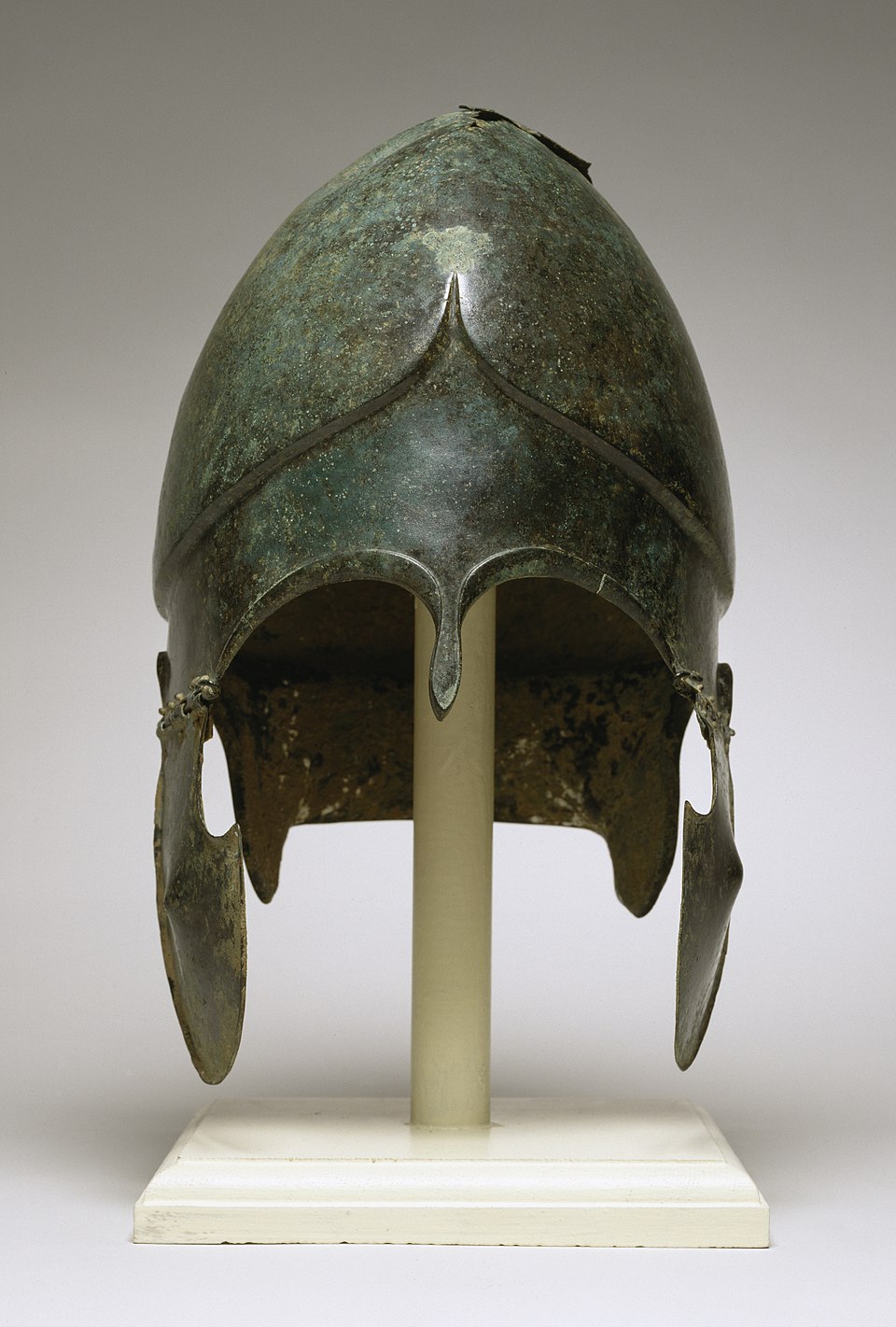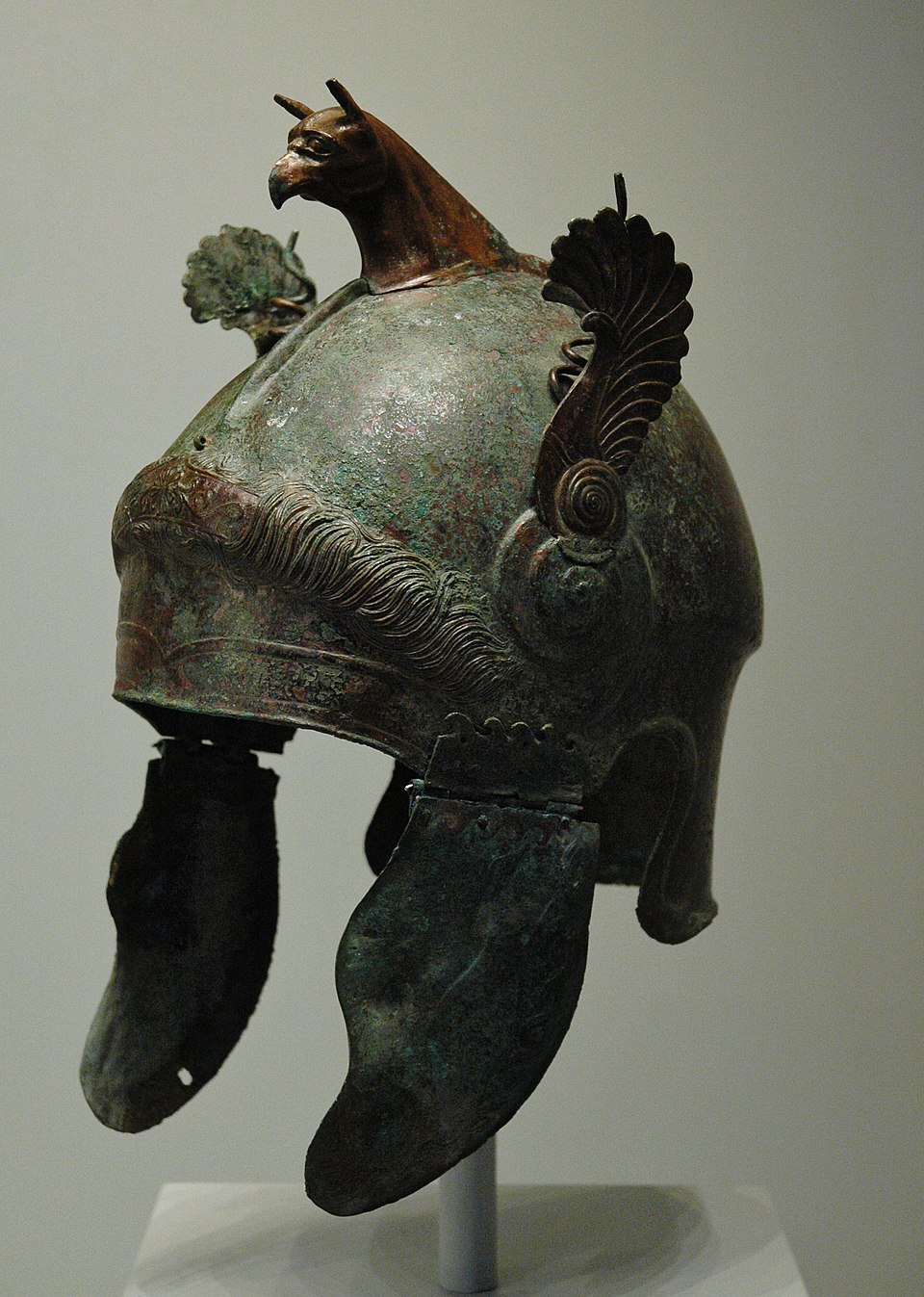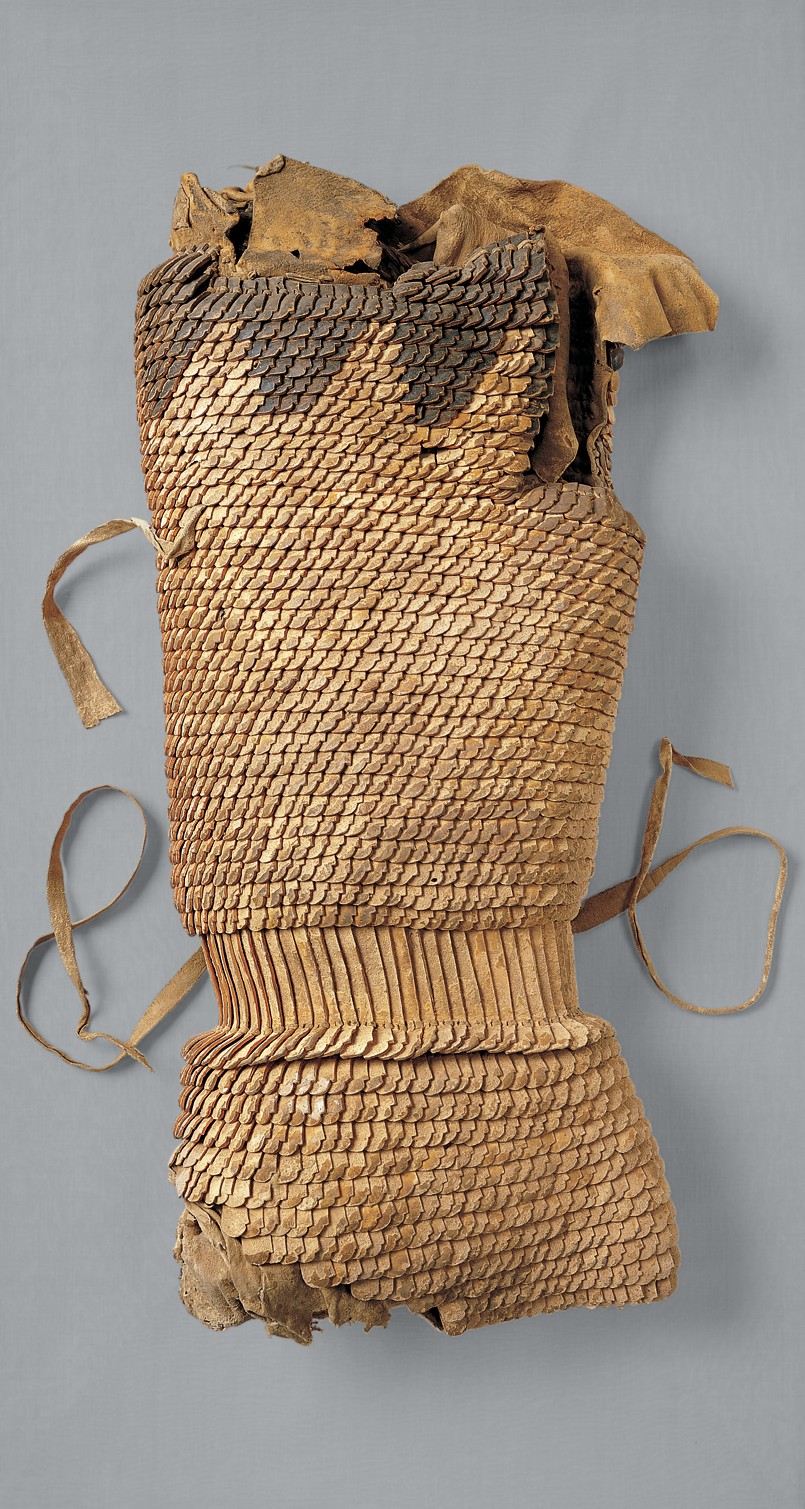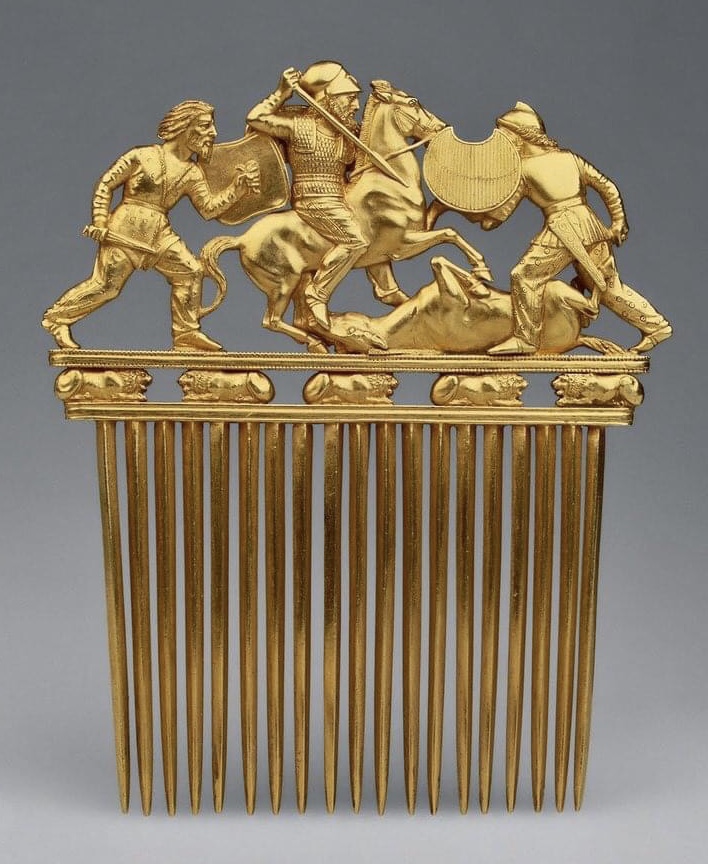Scythian Armor
To be discussed:
Materials
- bronze
- iron
- leather
Helmets
- “Kuban” helmet
- various Greek styles
Cernenko, McBride, & Gorelik (1983) provided a helpful set of illustrations of helmets from Scythian burials that are Greek in nature: the “Corinthian, Chalcidian, or Attic” types were among the most common (p. 7).
Some helmets appear to have had holes for lacing aventails of some sort on–such as scales or leather flaps.
Body Armor
- breastplate
- bronze breastplate featuring a Gorgon face from a 4th c. BCE Kuban burial
- linothorax
- scale
The Solokha comb shows several types of armor: a horseman with a Corinthian helmet and scale armor; an infantryman with a linothorax; and an infantryman whose only armor is a shield.
Limb Armor
- greaves
- some greaves with human face decorations
- splints?
Shields
Materials
- metal-faced
- wicker
Shapes and Sizes
Extant shields and depictions of them suggest several shapes and sizes.
One rectangular Pazyryk shield made of wicker rods threaded through leather measures 40.5cmx30cm (~16“x11.8”), according to Simpson & Pankova (2017).
A tombstone-shaped (rectangular with a rounded top) shield from Pazyrk measures 68cmx50cm (~26.75“x20”), according to Simpson & Pankova (2017).
Greek influences/elements
TBA
Persian influences/elements
TBA
References
see also: weaponry
